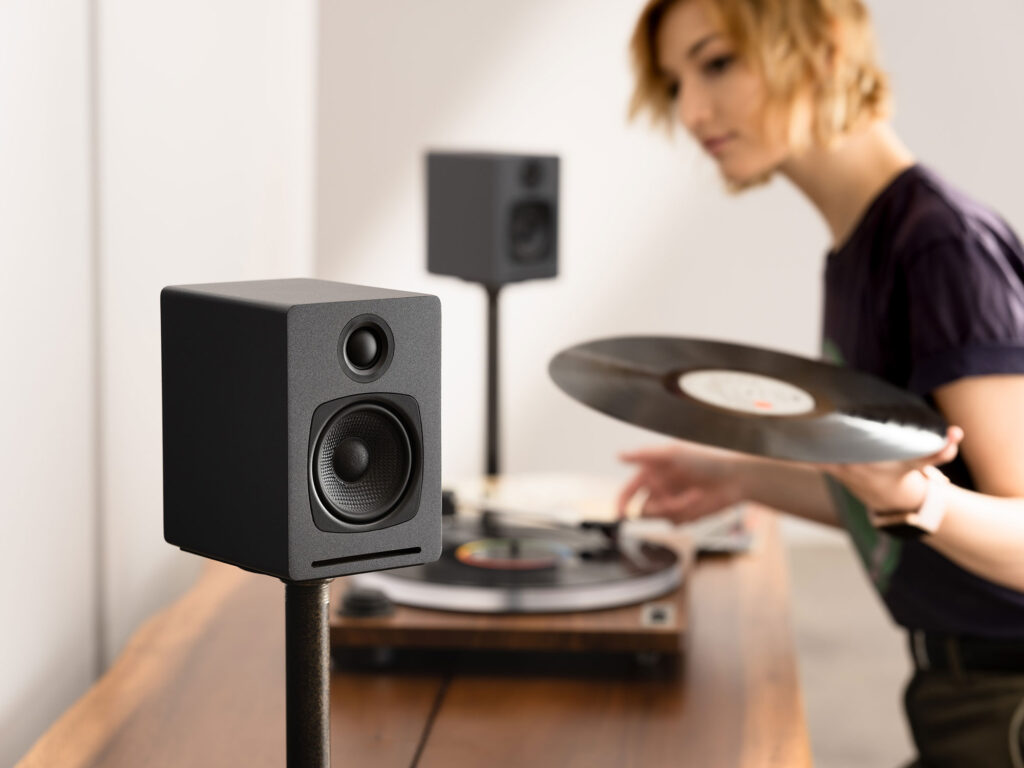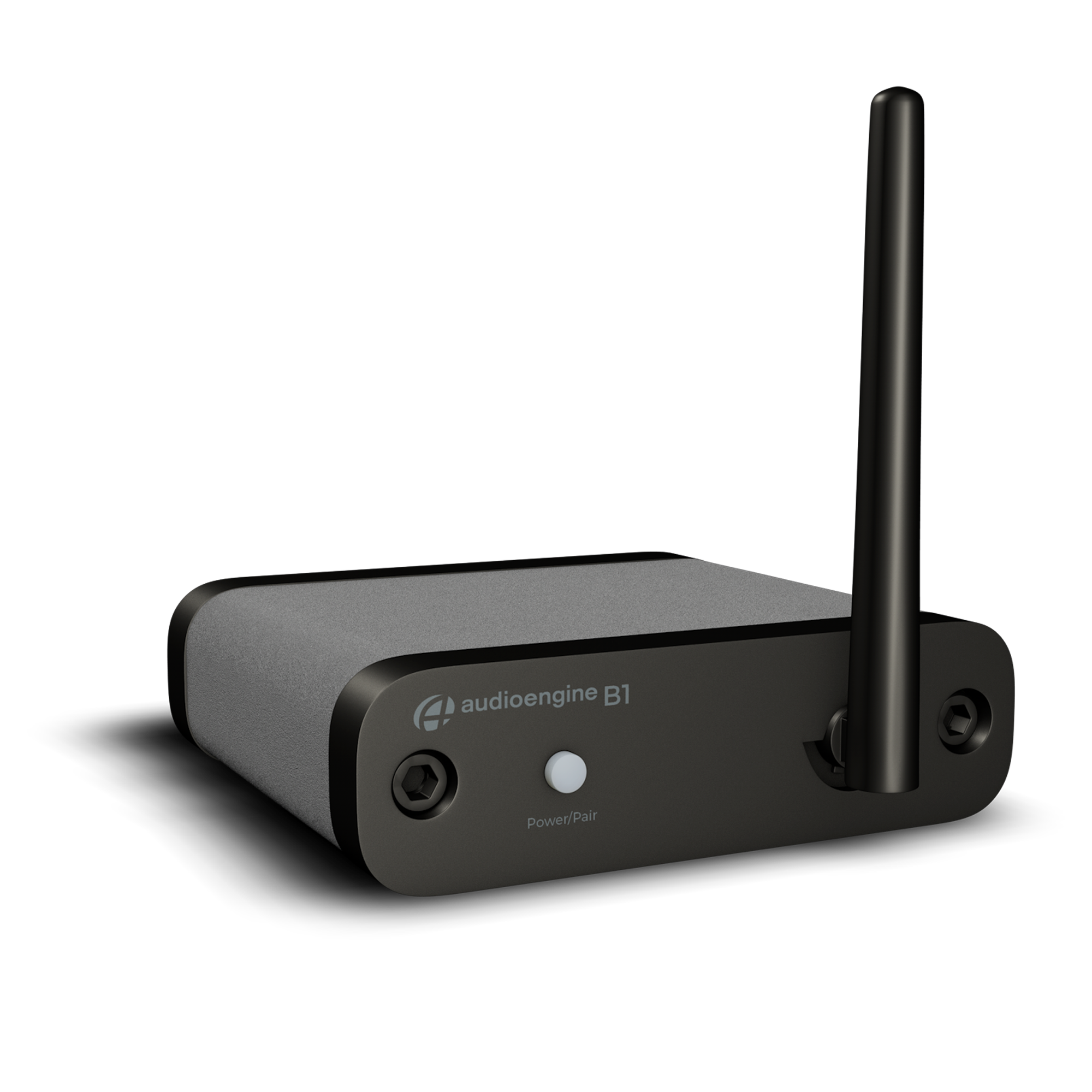
B1 Next Gen Bluetooth Music Receiver
Technical Specifications

General specifications
Bluetooth receiver type
Bluetooth 5.3, Qualcomm QCC 3040
Supported Bluetooth codecs
aptX Adaptive, aptX HD, aptX, AAC, SBC
Supported Bluetooth profiles
A2DP
Inputs
Bluetooth, USB
Outputs
Stereo analog RCA
Digital optical (SPDIF)
Required power
5V, 200mA
Wireless operation range
Up to 100ft (30m) typical
Full-scale output
2.0V RMS
Output impedance
47 Ohms
D/A converter
ES9018K2M
Power filtering
3-stage redundant regulation
SNR
104dB
THD+N
<0.03%
Frequency response
10Hz - 20kHz (+/-0.5 dB)
Crosstalk
<120dB
Input bit depth
32-bit (upscaled)
Input data rate
Determined by Bluetooth
Latency
~80 milliseconds (ms)
Product dimensions
3.5 x 4 x 1
Shipping weight
1.0lbs (0.5kg)
Shipping box dimensions
11 x 7 x 3
Environmental Requirements
Operating temperature: 32° to 105°F (0°C to 40°C)
Storage temperature: -4°0 to 115°F (-20°C to 46°C)
Relative humidity: 5% to 95% non-condensing
Included accessories
RCA audio cable (3ft/1m)
Power adapter with detachable cable
Microfiber bag
Setup guide
Technical Features
Supports all Bluetooth-enabled devices
High-fidelity Bluetooth with aptX Adaptive transmission and extended range
Stream high-resolution 32-bit digital audio from the Audioengine B1 to any music system.
Includes built-in ES9018K2M DAC for superior 32-bit upscaled playback
Aluminum case with audiophile-grade connectors
Analog and optical outputs
2.0Vrms maximum output level
Experience stunning audio quality with aptX Adaptive coding, built-in 32-bit DAC, and extended wireless range.
DAC Characteristics
The B1 Bluetooth Receiver utilizes the ES9018K2M DAC, widely known for its low noise and high fidelity. B1 is essentially an upsampling 32-bit Bluetooth DAC and will pad all bit depths internally to 32-bits, thus achieving a higher signal-to-noise ratio. Due to the ES9018K2M's high signal-to-noise specs, the fact that the digital signal is converted (upsampled) to 32-bits and the added benefit of triple redundancy power source conversion and filtering, the B1 presents impressive low noise and low distortion characteristics with a noticeable improvement over other Bluetooth devices.
Extended Range
Most Bluetooth implementations have very limited range, usually within just one room. But with careful signal management circuitry and antenna tuning, we offer a superior solution that will reach more than one room with no degradation in audio quality.
High quality Bluetooth audio
The B1 features aptX Adaptive and aptX HD coding which is an advanced Bluetooth audio codec that provides much higher-quality sound than previous versions. The B1 is backwards-compatible with all previous Bluetooth implementations as well, so you can wirelessly stream music from any device and still enjoy outstanding sound.
Optical Output
B1 also functions as a wireless audio bridge from your device to your favorite DAC or preamp. Use the internal DAC with RCA analog outputs or connect the optical output into another DAC.
Quickstart Guide
B1 Quick SetupStep 1: Connect audio cables from the B1 rear panel to your music system audio input.
Step 2: Connect the power adapter to B1 with the included power cable and plug the power adapter into an AC outlet.
B1 will automatically go into pair mode and the Pair button on the B1 front panel should be flashing.
Step 3: On your device, turn on Bluetooth and go to Bluetooth preferences.
Step 4: Select "Audioengine B1" to pair and connect. The Pair indicator on the B1 front panel should be solid.
Step 5: Play your music and adjust volume levels on B1 and your device.
Repeat steps 3 thru 5 to add additional devices. B1 can connect only one device at a time, however it will remember up to six devices.
To disconnect B1 from a paired device and put B1 back into pair mode, press and hold the Pair button until the indicator begins flashing.
For the full setup guide, download the attached PDF:
B1 quickstart guide-web
B1 Setup Video
Troubleshooting
B1 Troubleshooting TipsThe following troubleshooting tips can help diagnose and correct most concerns with the B1. We have attempted to make this list as comprehensive as possible. So, even though some of these may not apply to your issue, please still go through each one.
If you haven’t already, power cycle your B1 by unplugging the power connection, and reconnecting it.
1) Please make sure all of your connections are complete; also, check that all of your connector cables are in working order. You will want to swap out some interconnects to test for this.
2) Try playing audio from more than one application on your source device (phone, tablet, computer, etc.)
3) Check to make sure your source device is running the most up to date version of software available. If an update is available, make sure you restart your device after the update is installed.
4) Try disconnecting from, and "forgetting" the B1 through your source's Bluetooth settings. Then, try re-pairing and connecting to the B1. If your B1 is already connected to a device, then the LED will be on and solid. If your B1 has been idle (and not connected to a device) for more than two minutes, the LED will be off. Tap the LED and it will begin blinking to indicate it is ready to pair, then select the B1 in the Bluetooth settings of your source device. If your B1's LED indicator doesn’t light up, try using a different power source, and/or micro USB cable (many Android smartphones use the same connection, so your charger may be a good way to test for this).
5) Try using a different source device with your B1 to see if the issue follows. Try using the analog as well as the digital optical output, to see if you have this issue with both connections.
6) If at all possible, try your B1 in a different location and / or setup to see if something is causing interference in the current location. Something as simple as a router, cordless / mobile phone, halogen lamps, etc. near the speakers may be causing the issue in your setup.
FAQ's
Bluetooth Audio and Codecs
If you’re curious about wireless audio and have found yourself doing some research, you’re probably awash in buzzwords like codecs, sample rates, bit rates, resolution, bandwidth and heaven knows what else.

Lest you throw up your hands at the complexity of it all let’s do our best to explain some of the basics of Bluetooth audio.
Bluetooth is a radio signal that sends data from a transmitter in your phone or computer, to a receiver in your headphones or speakers. In order to be sent from one device to another in an efficient manner, this data has to be encoded by the transmitter and then decoded by the receiver on the other end.
This is a big job, not to mention it all has to be done in a fraction of a second.

The problem here is that traditional Bluetooth codecs can’t process the amount of information necessary to recreate a faithful audio signal on the other end, so they have to compress the information. During compression, little bits of information are lost, and as we discussed earlier, the “information” in this case is YOUR MUSIC!
Think about that for a second!
Your devices can’t keep up with the amount of information your music requires, so they essentially throw it out; little bits of the frequency spectrum, dynamic range, etc. This may not sound like a big deal, but when you consider the idea that something like aptX HD can fix it, why would you settle for anything less?
Now before we dive into some of the technical aspects of what makes aptX HD so amazing, it’s important to discuss some of the older codecs so we can understand what aptX HD really brings to the table.
Think of the word “codec” as a combination of the terms “code” and “decode,” as these are the primary functions of all audio codecs; their job is to encode large information files so they can be more easily transferred, and then to decode that same file on the other end.
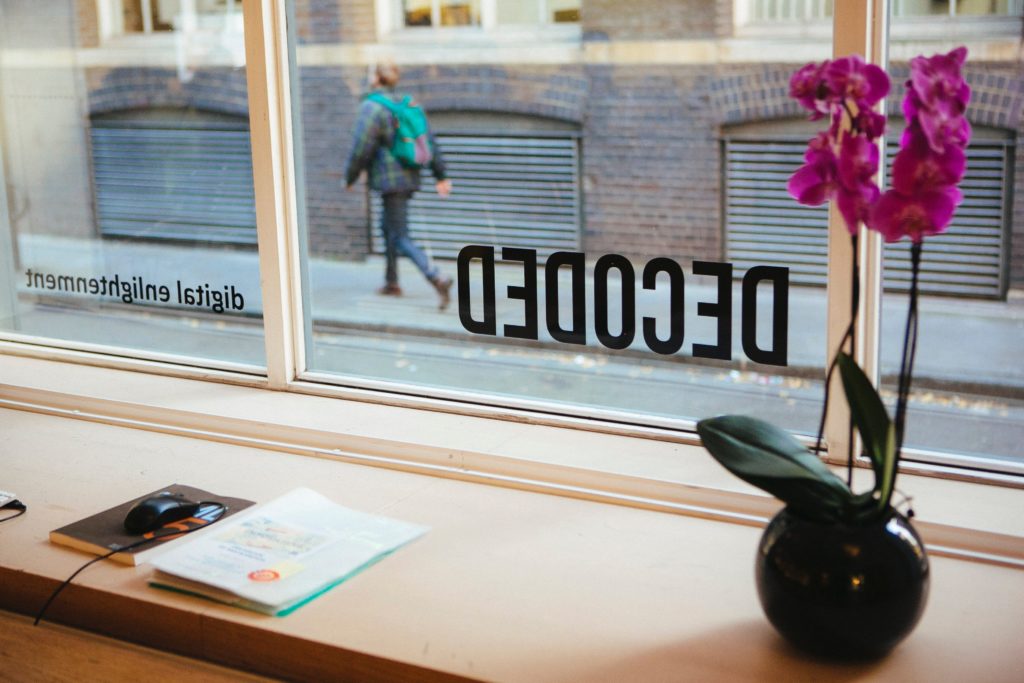
You’re familiar with MP3s, right? Well, an MP3 is just a type of codec… a very widely used type of codec, in fact. Since we have all used MP3s, we are probably all familiar with how dramatically they can degrade the quality of an audio file. Luckily, tons of codecs have been developed over the years, all with the goal of vastly surpassing the audio quality of a standard MP3. Some other codecs you may be familiar with are SBC, AAC, LDAC, and aptX. These are all considered superior to MP3s, but are also geared towards Bluetooth wireless audio.
So what’s the difference between standard aptX, and aptX HD?
For starters, aptX has actually been around since the 80s, and is currently much more widely used than aptx HD. Standard aptX has been used in phones, tablets, and laptops for a long time now so it’s likely that you’ve actually experienced Bluetooth transmission that features aptX. But for those of you who are looking for some numbers, here you go:
Standard aptX:
- Speed: 352 kbps
- Sample Resolution: 16-bit
- Sample Rate: 48kHz
Aptx HD:
- Speed:576 kbps
- Sample Resolution: 24-bit
- Sample Rate: 48kHz
Alright, let's talk about that for a second.
The speed of these file transfers are measured in Kilobits-per-second (Kbps), and they define how quickly all of this audio information moves from one device to another. 48kHz denotes the sample rate of the audio data — the sample rate is measurement of how many samples of audio are carried from one end to the other end per second.
So this means aptX HD is providing audio information 48,000 times per second… and that’s a lot of times.
Next, 24-bit denotes the sampling resolution — sample resolution is a measurement of how many bits of information are included in each sample. Most Bluetooth codecs simply cannot provide this much information. Even if they could, they wouldn’t be able to encode it and decode it faithfully within 1 millisecond.
Long story short: aptX HD recreates your audio data more accurately and in greater detail than aptX and does this more quickly, efficiently, and with very low latency. Pretty impressive right?
Now I know Bluetooth audio has been pretty crappy in the past, but those days are over. Out with the old, in with the new! With Apple and Google doing away with headphone jacks on their phones, we are practically being forced to make the switch to Bluetooth — this is why aptX HD makes so much sense. If we are going to be forced to go wireless, why don’t we take advantage of some Bluetooth sound quality that surpasses even traditional wired headphone connections in some cases?
Which devices support aptX HD?
In order to take advantage of the benefits of aptX HD, you’ll need to make sure you have a device that supports it.
These devices will have a Bluetooth chip called the CSR8675, which is capable of supporting 24-bit audio from aptX HD.
Bluetooth Receiver vs. Wireless Speakers
Customers occasionally write to ask questions about the differences between our B1 Bluetooth Music Receiver and our Wireless Powered Speakers. Usually the questions go something like…
“Do I really NEED your complete speaker system or just the B1 receiver?”
“Is one product easier to use than the other?”
“Are there differences in sound quality between the B1 Bluetooth Music Receiver and your Audioengine Wireless Speakers?”
…and there have been plenty more questions that come along with those — but have no fear, today we are here to hopefully clear this up!
First off, you should have some peace of mind knowing that no matter which solution you choose, we absolutely guarantee your satisfaction. Apart from that you might be wondering which option is going to best suit your needs — reasonable enough, so let’s talk about it…
Do I really NEED the entire system or can I get away with just the B1?
Audioengine wireless speakers are powered music systems that implement cutting edge Bluetooth aptX-HD to deliver high-fidelity long-range wireless from any device.
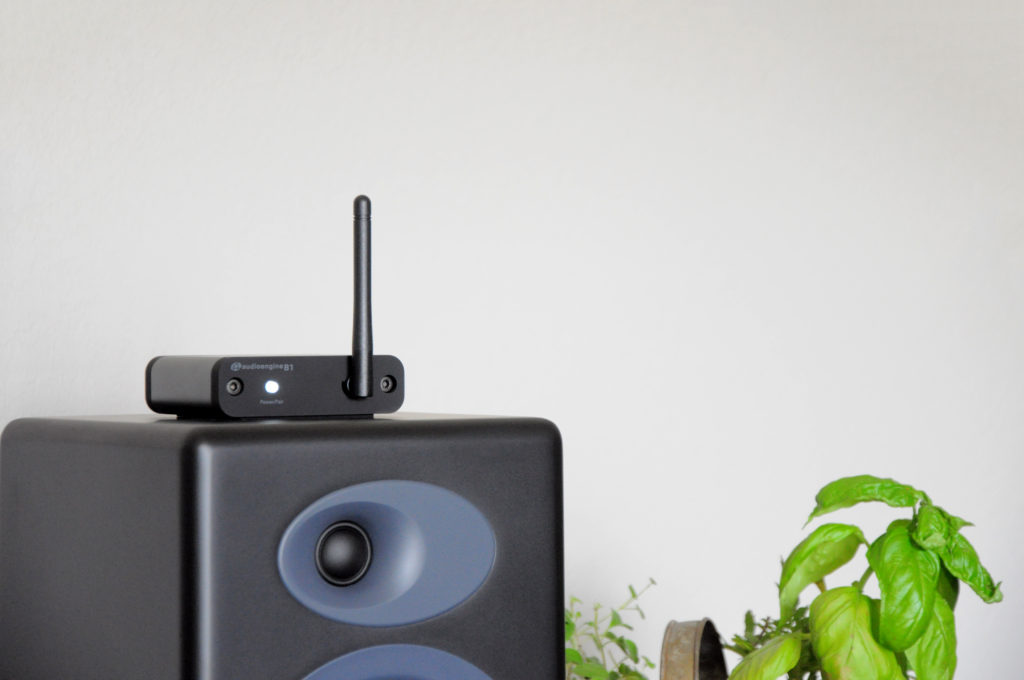
The B1 Bluetooth Receiver also offers the same aptX-HD technology; the only difference being that B1 does not have built-in speakers, so you will still need speakers to hear your music.
Now, customers sometimes say “I already have a different brand of powered speakers that I LOVE, I just want to make them wireless.” If this is the case, you can use B1 to turn your current non-wireless music system into some super-rockin’ wireless speakers. Or maybe you have an older pair of Audioengine speakers that you bought before we made our speakers wireless — here again, the B1 is a great solution! You just need to make sure, no matter what system you have, that you have the proper inputs — RCA-style inputs work the best, or even an optical audio input if your gear has one.
Is one solution more user-friendly than the other?
Hey, great question — glad you asked! This one is a bit subjective and depends on how many components you want in your setup.
The simple fact is if you have Audioengine wireless speakers you will have the easiest setup under the sun. All you have to do is connect your speakers to power, connect the left speaker to the right, find the speakers in your phone or tablet’s list of available Bluetooth devices and BOOM, you’re done! Think of it as if the B1 Bluetooth receiver is built into Audioengine speakers.
On the other hand, if you are using a pair of non-wireless speakers and you want to make them Bluetooth compatible by using our B1 Receiver, you will need to add B1 to your setup, but in all actuality the B1 itself is just as easy to use as the speakers. Long story long, if you love your current speakers and aren’t ready to make the switch, adding the B1 is still an extremely user-friendly option and you will be up and running with great-sounding wireless audio in no time flat.
Are there differences in sound quality between the B1 and the Wireless Speakers?
This is the only moment in this article where things might teeter on the brink of being controversial.
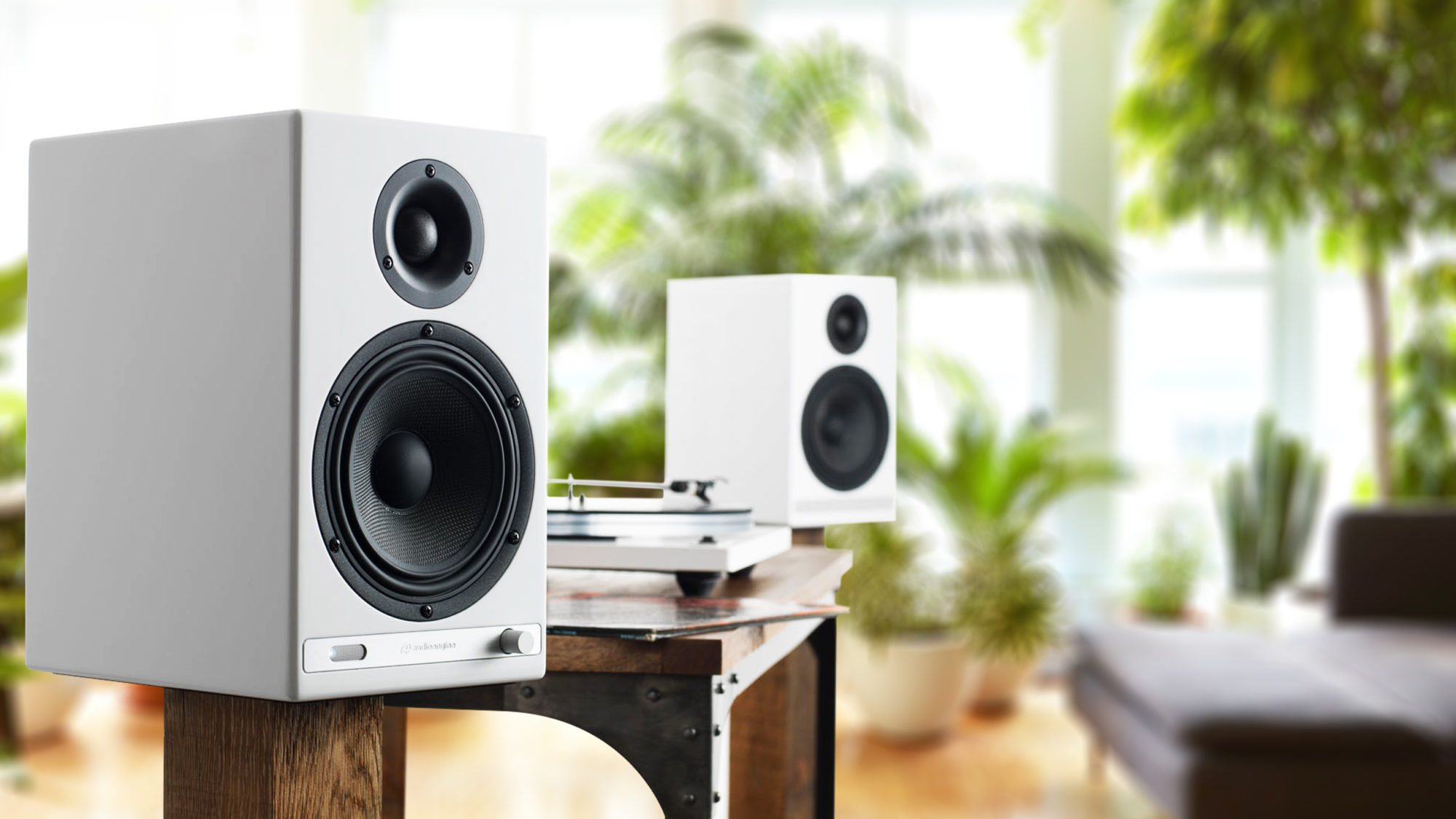
Audioengine’s Wireless speakers guarantee immaculate and highly satisfying sound quality, which is hard to beat. The B1 offers aptX-HD Bluetooth with 24-bit upsampling (which are the exact same Bluetooth specs as our wireless speakers), so the audio being SENT from your devices to the B1 is no different than the audio being SENT from your device to Audioengine’s Wireless Speakers; however, the B1 itself doesn’t have any speakers, so it has to rely on whatever speakers it is connected to. This is the only point at which your sound quality COULD suffer.

So let’s say you are sending the highest quality audio file from your laptop to the B1 Bluetooth Receiver. The B1 takes that super-high-quality file and handles it with such great care you may not be able to tell whether it was wireless or not…BUT, if you have your B1 connected to a crappy pair of speakers, guess what? No matter how pristine that audio file was, and no matter how skillfully the B1 handles that file, crappy speakers are going to make that audio sound crappy. BUT, if you are using the B1 to send audio to a pair of really great speakers that you love, the B1 will absolutely deliver the highest quality audio possible via Bluetooth, and it will do so with an extended range so you can bounce around the house and not worry about dropouts or inferior audio quality.
This was a ton of information so here’s a quick recap and summary…
The Bluetooth capability of Audioengine’s Wireless Speakers and the B1 is exactly the same. If you love your current speakers and aren’t ready to change brands, don’t sweat it, the B1 will give you beautiful wireless audio all the same. BUT, if you are looking to be truly reinvigorated by your music, you definitely need to try Audioengine’s Wireless speakers to take advantage of both our highly advanced Bluetooth technology and our unparalleled listening experience.
Why We Choose Bluetooth over WiFi
It’s no secret that most players in the “smart” speaker market are primarily using wi-fi to wirelessly send audio around the house.
So if Sonos, Bose, and other big name brands are using wi-fi through an internet router, why would Audioengine use Bluetooth for wireless audio in their home speakers?

Easy Setup
Audioengine wireless home speakers are ready to use within minutes out of the box.
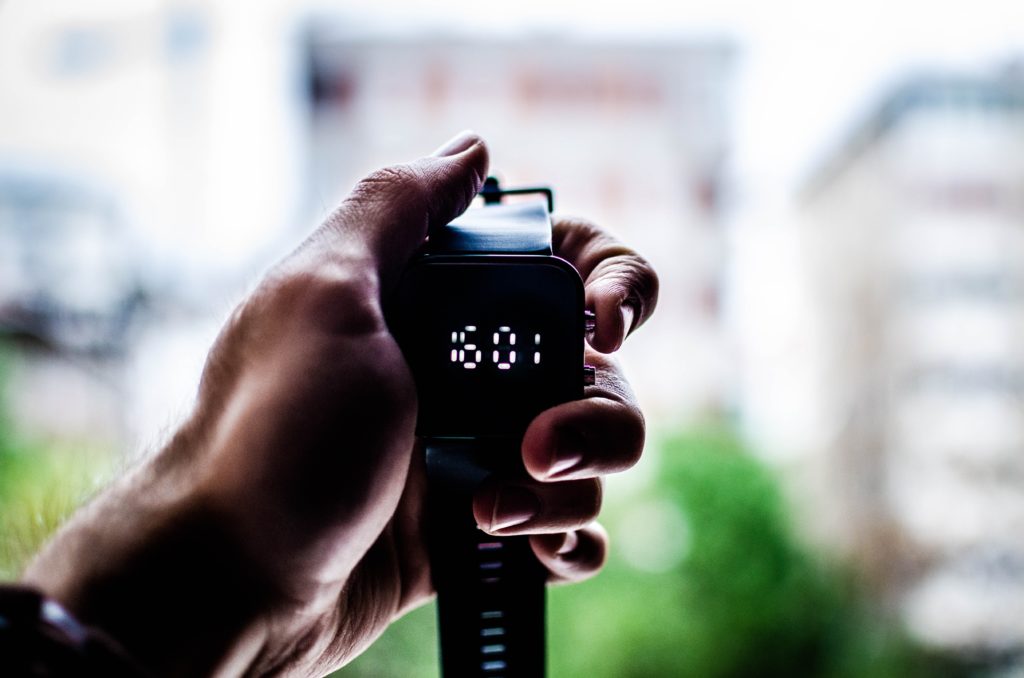
Connecting power and the speakers to one another is easy enough, but getting your music playing wirelessly is actually even more straight-forward. Unlike most of the big brand smart speakers, you don’t need to download and install apps for setup, you don’t need to connect the speakers to your router, and there aren’t any passwords or other overly-complicated hoops to jump through. Audioengine makes it simple by keeping the wireless connection exclusively between your phone, tablet, or computer and the speakers. Simply go to your device’s list of available Bluetooth connections, select Audioengine, and play music directly from your favorite app! Spotify, Pandora, Tidal, iTunes, YouTube; any apps that stream audio from your device can be played through your Audioengine home speakers. And remember, our speakers don’t depend on the speed of your internet connection or wireless router so when your internet slows down or doesn’t cover all of your house, you can still stream from your phone or connect another device via one of Audioengine’s many audio ports, which brings me to the next point…
Flexible and versatile
Even before the implementation of our long-range wireless Bluetooth audio, Audioengine home speakers have been some of the most versatile on the market.

A selection of inputs allow you to not only stream wirelessly but to easily and quickly connect your turntable, TV, AVR, or any other piece of gear with an audio output. The point being, is that you are not bound to a single input source. Not many auxiliary options are offered among the rest of the smart speaker community, leaving the user completely reliant upon the wi-fi connection and other compatible devices they may already own. And what about when you’re using Alexa to search for music, but a particular song can’t be played due to copyright issues? This can happen with voice-controlled systems, but we all know a quick visit to YouTube can typically get around this barrier and play the music you want to hear. Now you can actually listen to any Beatles tune you want, whenever you want, but at the same time you can also connect to an external Alexa device for superior sound with Audioengine.
Range and quality
Bluetooth transmission range was not so great in the past, as many of you have experienced. And products using wi-fi still tout the superiority of its range over that of Bluetooth, but the truth is, those days are over.

Audioengine home speakers utilize cutting-edge tech that allows a solid transmission of up to 100 feet (and sometimes more) with no drop-outs and no blips. Again, this range is not reliant upon the ebb and flow of your wi-fi strength at any given point. But what about sound quality; isn’t Bluetooth kind of crappy? No way! Bluetooth audio has come a long way in the past few years as well, and the implementation of the aptX HD codec allows for near lossless audio transmission that rivals the sound of many wired music systems.
Elegant aesthetic and sound
Audioengine home speakers have always held sleek looks that equals their sound quality, and with the shift to high-quality wireless, these standards have been upheld.
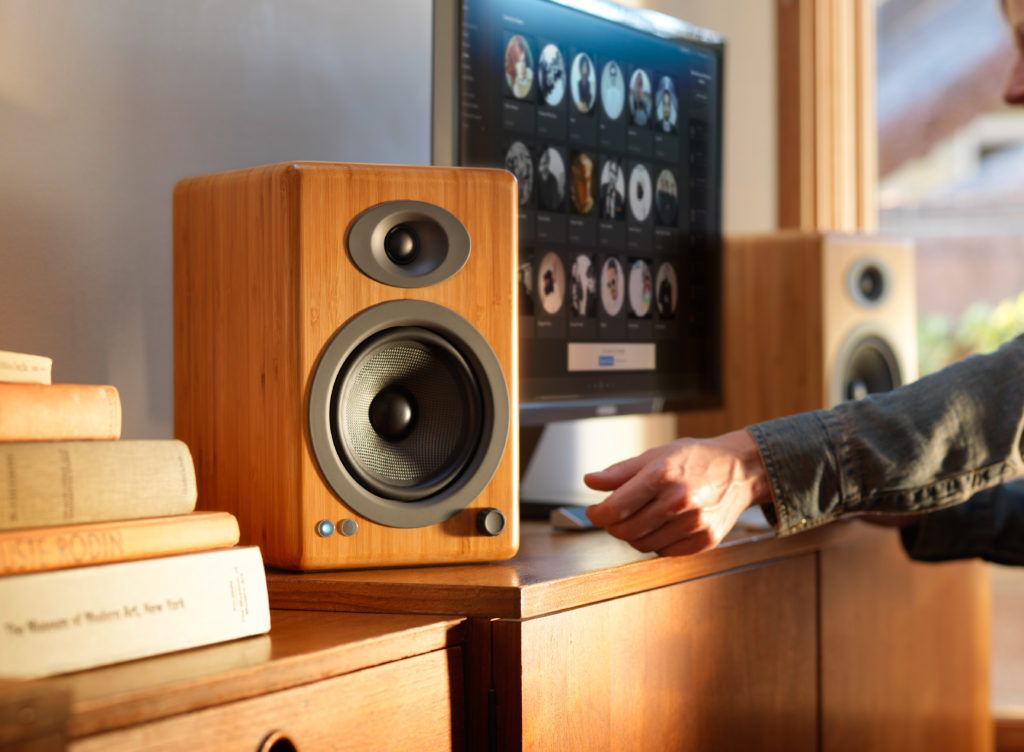
We didn’t want to sacrifice our warm, rich, analog power amps and hand-built wooden cabinets by trying to cram all that goodness into a generic-looking plastic speaker enclosure with average-quality wireless. We want our speakers to be an integral part of the look and feel of your home and we also want you to have TWO speakers so your listening experience can be what it’s meant to be. Other systems allow you to purchase “add-on” speakers, but that means in order to have two speakers you have to, well… spend more money for “add-on” speakers. Audioengine home speakers come standard as a stereo pair that are tuned to perfection. To put it simply, Audioengine home speakers are some of the best-sounding speakers on the market today. “Smart” speakers tend to put more focus on the “smart” portion than on the “speakers” portion, often leaving the sound reproduction underwhelming. Would you rather watch the next season of GOT on a single wi-fi speaker or on a matched pair of award-winning audiophile-grade speakers with true stereo sound?
So, it’s safe to say Bluetooth and wi-fi each have their own advantages, just as anything else. But in the end, Bluetooth was the choice we made to be as user-friendly, versatile, and as hi-fi-sounding as possible.
Adding Bluetooth to Your Stereo Receiver or Amplifier: A Practical Guide with the Audioengine B1
In the current landscape of digital music, the convenience and versatility of Bluetooth connectivity have become increasingly essential for music enthusiasts. Those with traditional stereo receivers or amplifiers often find themselves at a crossroads, seeking to bridge the gap between their cherished, high-quality equipment and the modern world of wireless audio streaming.
This scenario raises the question: How to add Bluetooth to a stereo receiver or amplifier without compromising on sound quality? Enter the Audioengine B1 Bluetooth Receiver, a product that has risen to become one of our best sellers, thanks to its significant improvement in audio quality over competing solutions.
Why Consider Bluetooth for Your Audio System?
The shift towards wireless audio streaming is driven by several factors:
- Convenience of Wireless Technology: Eliminating the need for physical cables, Bluetooth allows for a clutter-free and flexible listening experience. The ability to control music from a distance is not just about comfort; it's about integrating your audio system into a wireless world seamlessly.
- Access to a Wide Range of Devices: Bluetooth enables your stereo system to connect with a variety of modern devices, including smartphones, tablets, and laptops. This compatibility opens up a world of possibilities, from streaming services and digital libraries to podcasts and online radio.
- Ease of Use: The ability to control your music wirelessly means you can change tracks, adjust volume, and switch between devices effortlessly, all from the device in your hand.

The Audioengine B1: Enhancing Traditional Systems with Modern Technology
The B1 Bluetooth receiver allows you to cast music and other audio from your device and send it out to any music system, without losing any sound quality along the way—even to those extended ranges. It works great with those vintage systems that have been waiting in the wings.
The Audioengine B1 Bluetooth Receiver has earned its place as a top seller by addressing the common pitfalls of wireless audio. Here’s how:
- Better than CD Sound Quality: The B1 stands out from its competitors by delivering an audio experience that’s both clear and rich. It leverages advanced technology to ensure that the sound transmitted over Bluetooth is faithful to the original recording. The B1 delivers high-quality, extended-range, CD-like quality sound anywhere in your home.
- Simple and Universal Compatibility: Designed for hassle-free integration, the B1 connects easily with any stereo receiver or amplifier, making the setup process straightforward for all users.
- Reliability: The B1 is known for its stable and consistent Hi-Fidelity Bluetooth connection, ensuring uninterrupted music playback.
Implementing the B1 in Your Audio Setup
- Making the Connection: Link the B1 to your stereo system using the provided cables, connecting it to an available input on your receiver or amplifier.
- Powering the Device: Plug the B1 into a power source, readying it for use.
- Bluetooth Pairing: Activate Bluetooth on your device and select the B1 to establish a connection.
- Begin Streaming: Your stereo system is now equipped to wirelessly receive audio from a range of Bluetooth-enabled devices.
Advantages of the Audioengine B1
While the B1’s primary goal is to introduce Bluetooth functionality to traditional systems, its benefits extend further:
- Preservation of Audio Quality: One of the key strengths of the B1 is its ability to maintain the integrity and richness of your music, a feature that has been a significant factor in its popularity.
- Compact and Unobtrusive Design: The B1’s sleek and minimalistic design ensures it fits seamlessly into any audio setup without becoming an eyesore or occupying unnecessary space.
- Versatility in Use: The B1 is not limited to streaming music; it enhances the audio experience for movies, gaming, and other multimedia applications.
Just a few MORE reasons why you'll love the B1 Bluetooth Music Receiver:
- Easy setup, connects in seconds
- No network setup, no passwords, no hassle
- Extended-range wireless aptX-HD Bluetooth, reaches further with CD-like quality sound
- Connects to any music system
- Analog and optical outputs
- Bluetooth aptX LED indicator
- CD-like quality audio with aptX-HD Bluetooth
Conclusion
The addition of Bluetooth to your stereo receiver or amplifier represents more than just a technological upgrade; it's a step towards bringing your audio experience in line with the evolving digital world. The Audioengine B1 Bluetooth Receiver offers an ideal solution, balancing the need for wireless convenience with the uncompromised audio quality. Its success as one of our top sellers is a testament to its ability to meet the demands of discerning audiophiles looking to modernize their audio systems.
Audioengine B1 and B-Fi Comparison Guide
Choosing the right wireless music streamer can significantly enhance your listening experience by offering you the convenience and quality of streaming music wirelessly. In the realm of home audio systems, two standout choices from Audioengine are the B1 Bluetooth Music Receiver and the B-Fi Multiroom Music Streamer. Both devices are designed to stream music wirelessly to your stereo system but cater to different preferences and functionalities.
Here's an in-depth look at these options to help you decide which one aligns with your audio streaming needs.
B1 Bluetooth Music Receiver: Expanding Horizons with Bluetooth
The B1 Bluetooth Music Receiver is designed for simplicity and quality, allowing you to wirelessly stream music from your device directly to your music system. It’s particularly suitable for integrating with both contemporary and vintage stereo systems, offering a touch of modernity without compromising the system's original charm.
Noteworthy Aspects:
- Extended Range: The B1 boasts a 100-foot range, ensuring stable, quality sound transmission across extensive spaces.
- Digital to Analog Converter (DAC): It comes equipped with an internal DAC that guarantees CD-quality or better sound, preserving the integrity of the music exactly as the artist intended.
- Ease of Connectivity: Setup is straightforward, requiring no internet or network configuration, offering a hassle-free user experience.
- aptX-HD Bluetooth: This technology supports better than CD-quality sound, providing an enhanced listening experience without the typical constraints of wireless streaming. Your device will stay paired, pair once and forget it!
- Versatile Outputs: The B1 features both analog and optical outputs, offering flexibility in connection to various audio systems.
- Design Aesthetic: With its brushed metal finish, the B1 not only sounds good but also adds a sleek, aesthetic appeal to your audio setup that is durable as well.
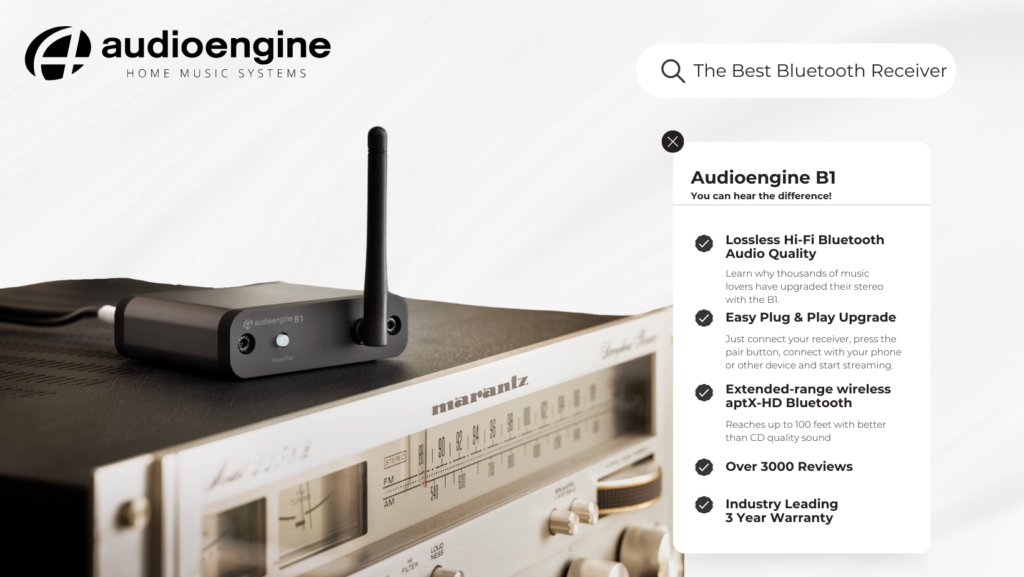
B-Fi Multiroom Music Streamer: The Wi-Fi Revolution
In contrast, the B-Fi Multiroom Music Streamer takes a leap forward by utilizing your home's Wi-Fi network for music streaming. This approach bypasses traditional Bluetooth streaming, offering a direct and uncompressed audio signal for a pure, high-fidelity sound experience.
Key Features:
- Wi-Fi Streaming: B-Fi streams music directly to your stereo from your streaming service via your router. This way, your songs are free from Bluetooth’s digital signal processing, a feature enjoyed by Audiophiles everywhere (more on this below).
- Audioengine App: Control is at your fingertips with the Audioengine app, allowing you to stream from major music services or your personal music library directly to any music system in your home.
- Internal DAC: Like the B1, B-Fi includes an internal DAC, ensuring that the music delivered to your stereo system is of the highest quality, just as the artist intended.
- Multiroom Capability: B-Fi’s strength lies in its ability to fill your entire home with music, streaming seamlessly to multiple rooms for a unified listening experience.

Making Your Choice: The Bluetooth vs. Wi-Fi Streaming Quality Debate
The B1, on the other hand, employs Bluetooth connectivity, utilizing high-quality codecs like Qualcomm aptX HD. These codecs are designed to compress and then decompress digital audio files with minimal loss of quality.
However, even the most advanced Bluetooth codecs involve some level of digital signal processing (DSP) to recreate the song. While to many listeners the difference may be imperceptible, discerning audiophiles might lean towards the B-Fi for its method of streaming.
The B-Fi's reliance on Wi-Fi rather than Bluetooth means the music is streamed without the additional step of DSP, potentially offering a purer, more accurate version of the original recording.
- B1 for Bluetooth Convenience: If you value simplicity and the versatility to stream from any Bluetooth-enabled device directly to your stereo system, the B1 offers an effective solution with an impressive range and high-quality sound. The B1 is your best option if you don’t have a smart phone or Wi-Fi network.
- B-Fi for Wi-Fi Fidelity: For those who prioritize the purity of uncompressed audio and the convenience of streaming across multiple rooms via Wi-Fi, the B-Fi stands out. It is particularly appealing to users who prefer controlling their music ecosystem through a dedicated app. You can even connect up to 9 B-Fi or A1MR for a system that connects your entire house! The B-Fi is a great choice for Audiophiles that prefer the warmth of analog audio playback.
Audioengine A1MR
Both the B1 and B-Fi embody Audioengine's commitment to delivering superior sound quality and innovative streaming solutions. By understanding the distinctive features and benefits of each device, you can select the wireless music streamer that best aligns with your lifestyle and audio preferences, ensuring an unparalleled listening experience that brings your music to life exactly as the artist intended.
Bluetooth receiver type
Bluetooth 5.3
Supported Bluetooth codecs
aptX HD, aptX, AAC, SBC
Supported Bluetooth profiles
A2DP, AVRCP
Inputs
Bluetooth
Outputs
Stereo analog RCA
Digital optical (SPDIF)
Required power
5V, 200mA
Wireless operation range
Up to 100ft (30m) typical
Full-scale output
2.0V RMS
Output impedance
57 Ohms
D/A converter
Wolfson WM8740
Power filtering
3-stage redundant regulation
SNR
SNR (DC to 20 kHz)
100dB
THD+N
(1 kHz FS 96 kS/s) <0.02%
Frequency response
10Hz - 20kHz (+/-0.5dB)
Crosstalk
>-86dB
Input bit depth
24-bit (upsampled)
Input data rate
Determined by Bluetooth
Latency
~30 milliseconds (ms)
Product dimensions
3.5 x 4 x 1
Shipping weight
1.0lbs (0.5kg)
Shipping box dimensions
11 x 7 x 3
Environmental Requirements
Operating temperature: 32° to 105°F (0°C to 40°C)
Storage temperature: -4°0 to 115°F (-20°C to 46°C)
Relative humidity: 5% to 95% non-condensing
Included accessories
RCA audio cable (3ft/1m)
Power adapter with detachable cable
Microfiber bag
Setup guide
Technical Features
Supports all Bluetooth-enabled devices
High-fidelity Bluetooth with aptX transmission and extended range
Stream high-resolution 24-bit digital audio from the Audioengine B1 to any music system.
Includes built-in Wolfson WM8740 DAC for superior 24-bit upsampled playback
Aluminum case with audiophile-grade connectors
Analog and optical outputs
2.0Vrms maximum output level
Experience stunning audio quality with aptX HD coding, built-in 24-bit upsampling DAC, and extended wireless range.
DAC Characteristics
The B1 Bluetooth Receiver utilizes the Wolfson WM8740 DAC, widely known for its low noise and high fidelity. B1 is essentially an upsampling 24-bit Bluetooth DAC and will pad all bit depths internally to 24-bits, thus achieving a higher signal-to-noise ratio. Due to the WM8740's high signal-to-noise specs, the fact that the digital signal is converted (upsampled) to 24-bits and the added benefit of triple redundancy power source conversion and filtering, the B1 presents impressive low noise and low distortion characteristics with a noticeable improvement over other Bluetooth devices.
Extended Range
Most Bluetooth implementations have very limited range, usually within just one room. But with careful signal management circuitry and antenna tuning, we offer a superior solution that will reach more than one room with no degradation in audio quality.
High quality Bluetooth audio
The B1 features aptX HD coding which is an advanced Bluetooth audio codec that provides much higher-quality sound than previous versions. The B1 is backwards-compatible with all previous Bluetooth implementations as well, so you can wirelessly stream music from any device and still enjoy outstanding sound.
Optical Output
B1 also functions as a wireless audio bridge from your device to your favorite DAC or preamp. Use the internal DAC with RCA analog outputs or connect the optical output into another DAC.
Audioengine operates two websites, audioengine.com and audioengineeu.com. If you go to any other site but these, they are not an Audioengine site. For Canada, Mexico and most of Europe and the UK, we only sell through Amazon. There are also a host of authorized retailers and sites across the US, and they can be found here. For international sales, we have distributors that operate independently, and they can be found here.
What happens if I buy from an authorized site claiming to be Audioengine? Unfortunately, there is not much we can do. We are taking all the action we can to make sure those sites don't get indexed, but we recommend you work with the provider of the card you used to make payment to get your money back.
Step-by-Step Guide
- Open Terminal:
- You can find Terminal in your Applications folder under Utilities, or you can use Spotlight by pressing Cmd + Space and typing "Terminal".
- Execute the Command:
- In the Terminal window, type the following command and press Enter:
bash
Copy code
sudo pkill bluetoothd
- Enter Your Password:
- After pressing Enter, you will be prompted to enter your password. Type your Mac's administrator password and press Enter.
- Note that when you type your password, it won't be displayed on the screen (not even as asterisks). Just type it and press Enter.
By following these steps, you should be able to reset your Bluetooth service on your Mac, which can help resolve connectivity issues with your Audioengine devices or any other Bluetooth peripherals.
We take great pride in our products, and go through great lengths to ensure consistency and quality. For that reason, this item was randomly selected for an additional step of Quality Assurance.
There can be only 1 active pairing at a time.
No, there are no firmware updates or special drivers needed unless you own our A1-MR multi-room speakers or our B-Fi multi-room wireless streaming device.
If a firmware update is released for the A1-MR or the B-Fi, you will be notified of the update the next time you open the Audioengine Control App. If an update is needed, simply click "update" on the DEVICES page next to the product that needs to have the firmware update applied. The app will handle the rest of the process from there!
Standard plug-n-play drivers that are provided by your computer's OS are utilized when using the USB input on our A2+, HD3, and HD4 speaker models.
And all of our Bluetooth speakers/products are compatible with any device that supports Bluetooth, and the A2DP profile for streaming stereo audio. This includes most smartphones, tablets, and computers. For computers that don't include Bluetooth support out of the box, you can simply add a USB Bluetooth adapter.
For starters, try pressing the Bluetooth LED on the front of the B1 to confirm it's not on. If the device that was paired with the B1 last is out of range or has been turned off, the light on the front of the B1 will turn off and remain off until the LED button is pressed.
From there, to assure it's not simply an issue with one of the accessories, swap out the USB cable and the USB AC adapter to see if that fixes things. If you have a micro USB cable laying around from an older cell phone model, you would be fine using that. And most current cell phone USB power adapters would work just fine with the B1.
If you have no success with either of the above, try plugging the B1 into a different power outlet to see how the unit reacts. If there is still no indication of the unit powering on, please contact our Support Team for further assistance.
You could use a B1 to stream Bluetooth audio in your car if you use USB power from either a cigarette lighter USB power adapter or USB port, and your car audio has an aux 3.5mm input. You can then pick up a RCA to 3.5mm adapter for the connection and the B1 will be ready to pair to your device/play through the car stereo. Let us know if you have any other questions.
Your Bluetooth connection works by projecting the sound from your phone. So, if your ringtone volume is on, that sound will come through Bluetooth too. This is a simple fix by changing the phone's ringtone settings to either vibrate or silent.
Though overall latency can be affected by some external factors (including things like signal strength, how well the source device's manufacturer has implemented it's Bluetooth, and even simply from being physically further away from the speakers) Audioengine Bluetooth products have very low latency when compared to most Bluetooth receivers, 30ms or less.
Here are some tips you can use to minimize any latency issues you may run into with your Bluetooth setup:
1) Try restarting both your device as well as the speakers (by switching them off, and back on, with the power switch on the rear of the speakers).
2) Check to make sure your source device is running the most up to date version of software available.
3) Try disconnecting from and forgetting the your Bluetooth speaker or device through your source’s Bluetooth settings, and then re-pair to your Bluetooth speaker/device.
4) If you have multiple apps or windows open when the delay occurs, try closing all of the apps that are not currently in use. The more multitasking your system is having to do, the greater the potential delay in audio when using Bluetooth -- this would apply to both your smart phone and computer.
5) When using your iPhone, we've found that resetting your network settings can help improve the overall functionality of Bluetooth with your device -- including the latency.
It depends on the device it is connected to. Most Android devices and computers can rename the device, but only for that specific connection. The B1 will still show as Audioengine B1 to a different device. You may also be able to change the name when using Apple products, but it will depend on the operating system.
The overall range you can expect will vary depending on the device you use with the B1. We tested using mostly a variety of smartphones though, and found 100 FT to be a realistic expectation, and that's through one wall.
The short answer is yes! You can use TIDAL on any compatible source device (PC, Mac, iPhone Android, etc.). The B1 is compatible with most all of these devices as well since they almost universally also include Bluetooth.
Setting up your Bluetooth turntable with your Bluetooth-ready Audioengine speakers/components should be simple! First, you would also need to make sure your Audioengine Bluetooth device is on, in pair mode (LED light flashing), and near the turntable. Next, you would need to use the pairing button to send the turntable into pairing mode. Depending on the turntable, you will need to either press and release the turntable's pair button or press and hold it; for example, on the Audio Technica AT-LP60-BT you would need to hold the turntable's pairing button for about two seconds, until the light flashes different colors. Once the turntable is in pairing mode, it will search and connect to the nearest available Bluetooth device. Once the turntable if paired and connected to your Audioengine Bluetooth device, the pair light on the receiver should turn solid.
If the Bluetooth LED is illuminated orange that means you are streaming in aptX HD which is a higher grade of Bluetooth signal.
The B1 uses the Bluetooth drivers located on your computer, so you may need to ensure you're using the most up to date drivers for your computer's Bluetooth. We'd also recommend going to the manufacturer of your computers website, and see if they have Bluetooth drivers there.
Yes, you can still use the B1 with the original A5 model! With this kind of setup, you'd just need to use either an RCA to mini-stereo adapter (like the one that was included with your A5s) or an RCA to mini-stereo cable. You would just connect the RCA end into the RCA outputs of the B1 and the connect the mini-stereo side to either the top or back mini-stereo inputs of the A5s.
You can absolutely still use the B1, and it will sound great. aptX® is a high quality Bluetooth audio codec that works really well. With that said, in addition to mandatory support for SBC, Bluetooth also includes optional support for many other codecs, like MPEG-1, MPEG-2, MPEG-4, and AAC, all of which have their own advantages, and some of which sound very close to aptX®.
AptX® keeps an up to date list of supported device on their site. See here, for supported smartphones:
https://www.aptx.com/products?field_product_category_tid=126
And here, for supported tablets:
https://www.aptx.com/products?field_product_category_tid=135
No extra software or drivers are needed. The B1 is compatible with any device that supports Bluetooth, and the A2DP profile for streaming stereo audio. This includes most all Smartphones, Tablets, and Laptop Computers.
If it's on and solid - This means the B1 is powered on, and currently connected to a Bluetooth enabled device.
If it's on and blinking - This means the B1 is powered on, but not currently connected to a device
If it's off (and plugged into power) - This means the B1 is powered off (standby) and not connected to a device. The B1 is however still visible to Bluetooth enabled devices in this state. So simply connect to the B1 using your device, and it will automatically wake up.
Yes, the B1 transmits 16-bit stereo audio.
Yes, any audio product with a standard analog audio input can connect to B1 with the included RCAs. B1 also includes a digital output so you also can connect via optical (TOSLINK).
Once your B1 is paired and connected then any app (iTunes, etc.) or online players (such as Youtube) will automatically play your music through Bluetooth.
The B1 uses Bluetooth, which operates on the same 2.4GHz band as most Wi-Fi Routers. There's always a possibility for interference with wireless technology on the same frequency, but in our testing this was very uncommon.
B1 automatically powers-down and mutes the output after about 10 minutes. The BT input, however, is still active so you can just pair to it again without pressing the front panel button. B1 will remain on if a device is paired with it and turned on though.



